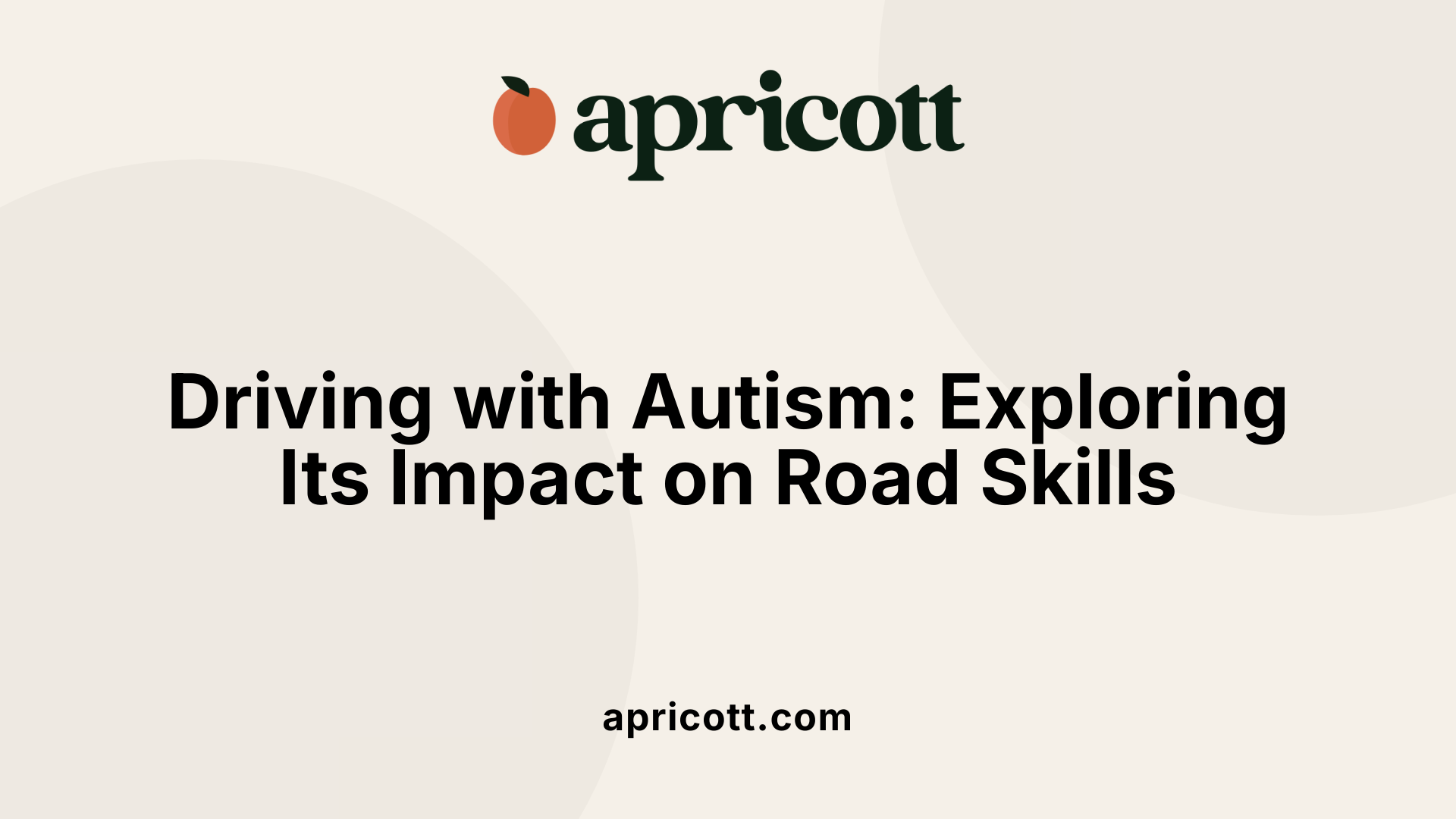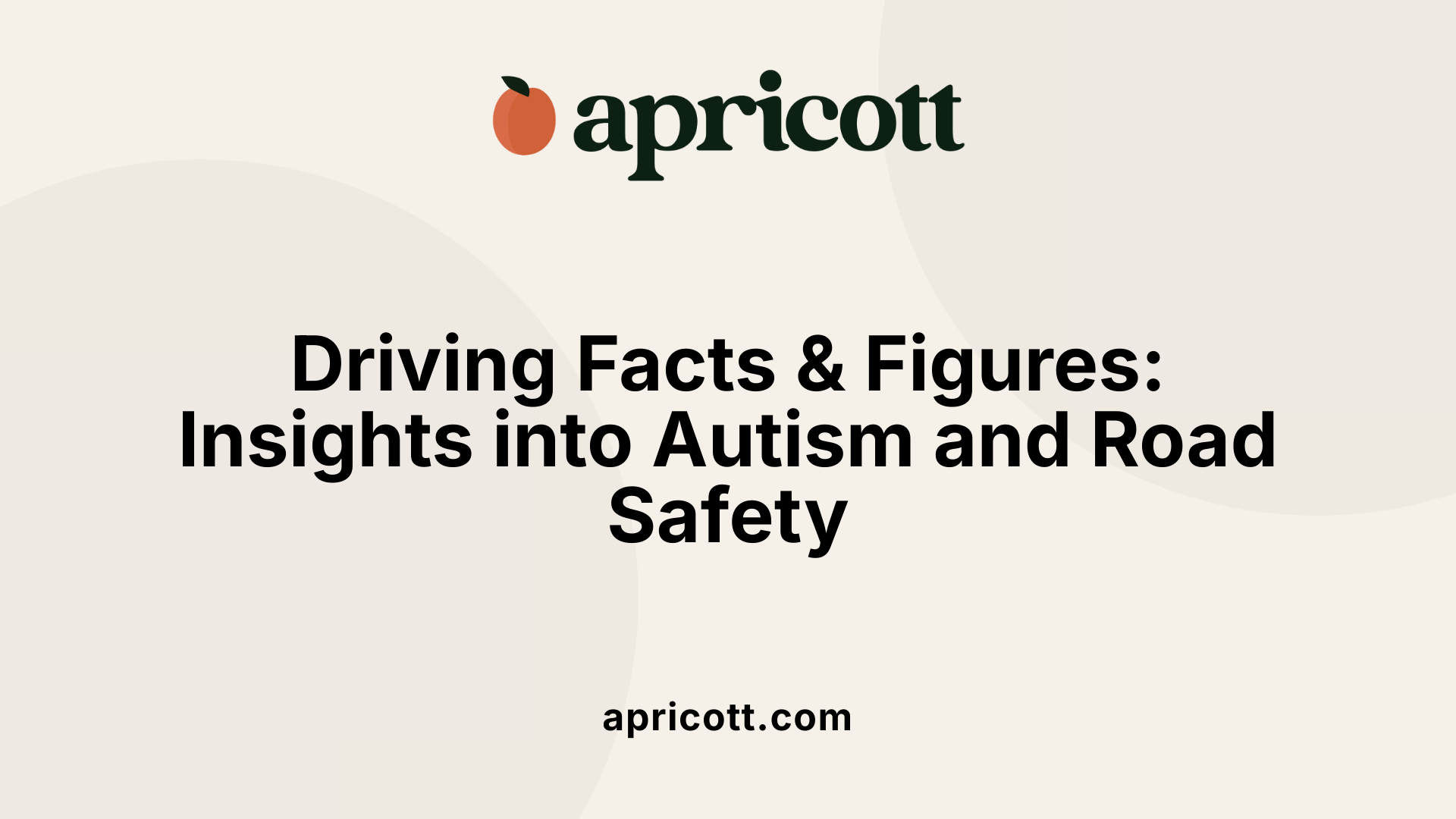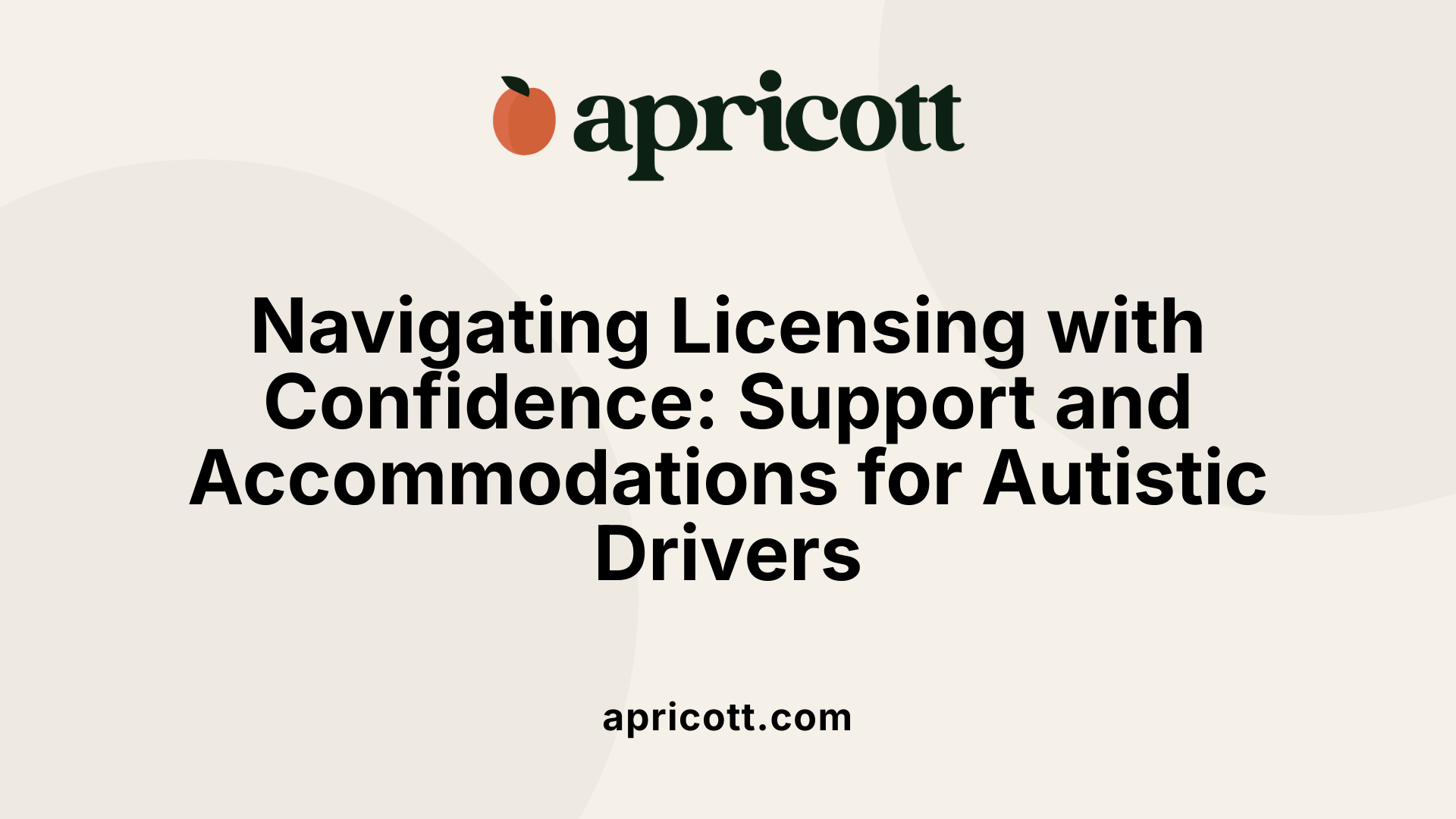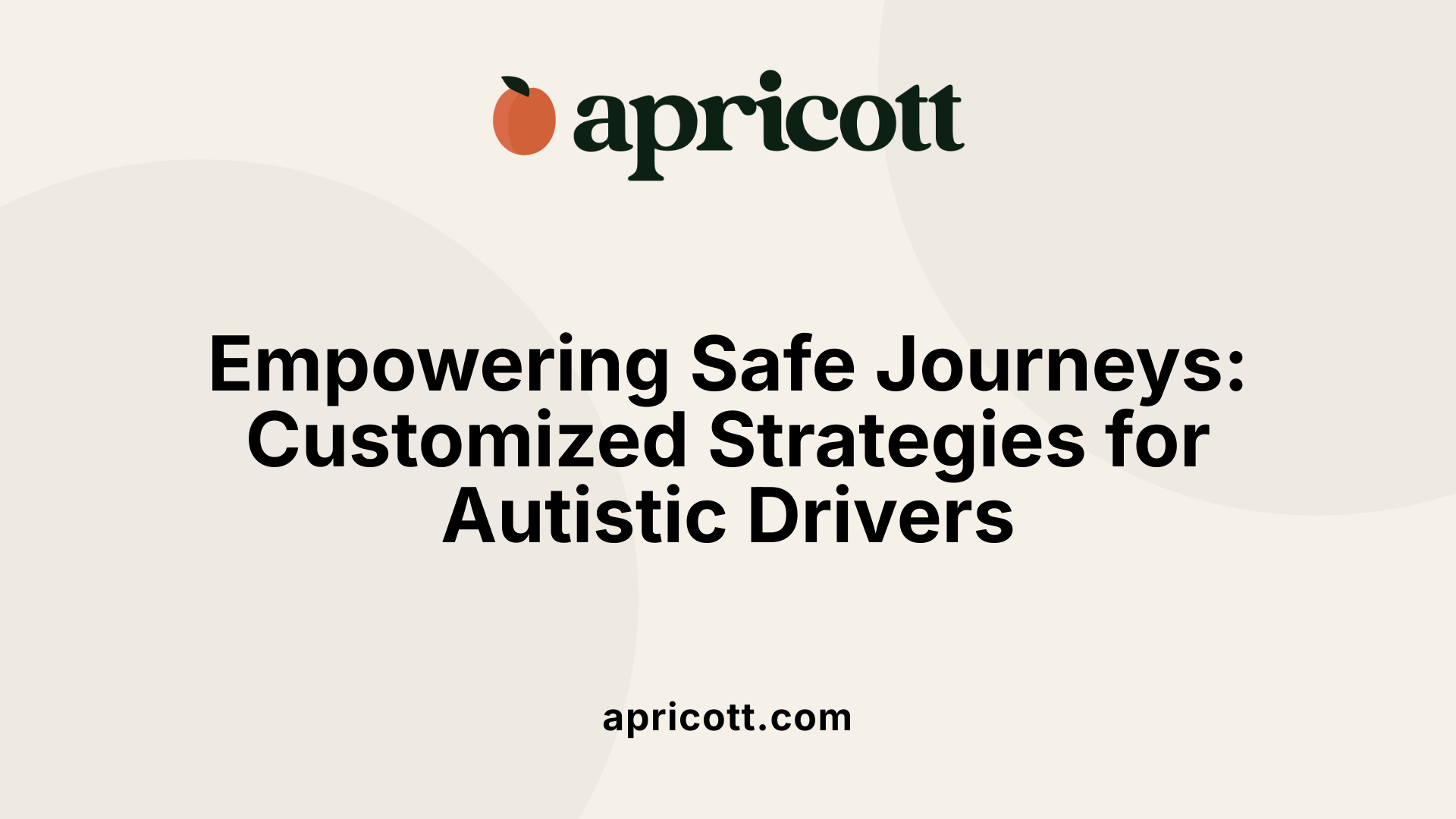Exploring the Relationship Between Autism Spectrum Disorder and Driving Capabilities
Autistic individuals can and do drive, and with tailored support and understanding, they can navigate the roads safely and confidently. This article examines the legal, psychological, and educational aspects of autism and driving, shedding light on the challenges, strengths, and resources available to autistic drivers.
Legal Status and Basic Requirements for Autistic Drivers
Can individuals with autism legally drive?
Autistic individuals have the legal right to drive in most regions, including the United States. There are no specific laws or restrictions that prevent someone on the autism spectrum from obtaining a driver’s license as long as they meet the general licensing requirements.
To qualify for a driver’s license, individuals must pass standard driving assessments that evaluate their ability to operate a vehicle safely. This includes demonstrating skills such as vehicle control, understanding traffic laws, and responding to road hazards. While autism may pose some challenges—like difficulties with concentration, hazard detection, and executive functioning—these do not disqualify someone from driving.
Proper training plays a critical role. Many autistic drivers benefit from specialized education tailored to their needs. Programs like the Ohio State Wexner Medical Center’s Driver Rehabilitation Program employ licensed instructors and specialists who use strategies such as skill segmentation, verbal commentary, and emergency preparedness exercises to help learners build confidence.
Assessment and support from healthcare and ASD teams are vital. These professionals can evaluate a person’s readiness based on their ability to perform daily tasks, understand traffic signals, and manage potential stressors. With the right preparation and support, autistic individuals can achieve independent and safe driving.
It is important to note that regional regulations and licensing procedures can differ. Some areas may have specific testing components or additional evaluations for individuals with neurodevelopmental conditions. Therefore, prospective drivers should consult local DMV or licensing authorities to understand regional requirements.
In summary, autism itself does not serve as a legal barrier to driving. With equal compliance to licensing procedures and access to appropriate training resources, many on the spectrum safely operate vehicles, enhancing independence and participation in community life.
For further details, search queries such as "autism driving legal requirements and restrictions" can provide region-specific information.
Impact of Autism Spectrum Disorder on Driving Abilities

How does autism spectrum disorder impact driving abilities?
Autism spectrum disorder (ASD) can influence an individual's capacity to drive in several ways. Challenges in sensory processing may cause heightened sensitivities to sounds, lights, or other stimuli inside and outside the vehicle. This can lead to distractions or discomfort while driving.
Executive functioning, which includes skills like planning, decision-making, and impulse control, often varies among autistic individuals. Difficulties in these areas can result in slower hazard detection, trouble managing multiple tasks simultaneously, or making quick decisions during traffic situations.
Social communication challenges also play a role. For example, understanding and interpreting road signs, signals, or the behavior of other drivers may be confusing if instructions are taken literally or if social cues are misunderstood.
Attention problems and slower reaction times are common, which may increase risks, especially during complex driving scenarios like turning at busy intersections or navigating through pedestrian crossings.
Despite these hurdles, many autistic drivers demonstrate strengths such as a strict adherence to traffic laws, good memory for details, and a consistent approach to driving tasks. These qualities can help mitigate risks and foster safe driving habits.
To address individual needs, specialized training and therapy—such as those offered in driver rehabilitation programs—are often recommended. These programs use strategies like breaking down skills into manageable steps and providing continuous verbal commentary to aid learning.
While some people with ASD may require longer periods to become comfortable and competent drivers, they can successfully attain their driver's license with support. Tailored interventions and assessments by healthcare professionals ensure that each individual’s readiness is thoroughly evaluated.
In summary, autism influences driving in complex, multi-faceted ways. With the right support, understanding of personal strengths, and proper training, many individuals on the spectrum can drive safely and independently.
Common Driving Challenges Faced by Autistic Individuals

What driving challenges might autistic people experience?
Autistic drivers often face unique challenges on the road that stem from differences in perception, communication, and processing. Sensory sensitivities are one of the most common issues, where bright lights, loud noises, or rapid movements can lead to sensory overload. Such overwhelming inputs might cause disorientation or distraction, affecting their ability to focus safely.
Multitasking is another significant obstacle. Tasks like checking mirrors, judging distances, and responding swiftly to unexpected hazards require a high degree of cognitive flexibility and attention, which can be more difficult for some autistic individuals. This difficulty can slow reaction times and increase the risk of accidents.
Understanding and interpreting social cues and instructions pose additional hurdles. Traffic signals, lane markings, and idiomatic expressions used in driving instructions can be confusing. For instance, understanding sarcasm or figurative language, like “take a left when safe,” may be problematic for individuals who interpret instructions literally.
Many autistic drivers also experience heightened levels of anxiety and stress, especially in complex driving situations or during interactions with police or other authorities. This stress can impair decision-making and response times, further challenging safe driving.
Despite these challenges, proper training programs, occupational therapy, and supportive tools can help improve driving skills. Familiar routes, visual aids, and gradual exposure to complex traffic scenarios enable many autistic people to develop confidence and independence behind the wheel. Ultimately, with targeted support and patience, numerous autistic individuals successfully learn to navigate the roads safely.
Research and Data on Autism and Driving Safety

What research exists regarding autism and driving ability?
Autistic individuals can and do learn to drive, with many achieving safe driving habits. However, they often face distinctive challenges that can impact their ability behind the wheel. Studies have shown that autistic drivers may experience slower hazard detection, difficulty recognizing social cues, and problems with decision-making and motor coordination. These challenges can make driving more complex, requiring tailored strategies to ensure safety.
Research also highlights that fewer teens with autism obtain driver's licenses compared to their neurotypical peers. On average, autistic adolescents without intellectual disability tend to take around two years to earn their license, with many needing additional time and support during their learning process.
Despite these hurdles, significant findings indicate that crash rates for autistic drivers are comparable to or lower than those of non-autistic drivers. For example, a major study conducted by the Children’s Hospital of Philadelphia found that licensed autistic drivers have similar or even safer driving records, often adhering more strictly to traffic laws and paying close attention to their environment.
Efforts are underway to develop specialized assessments and training programs to prepare autistic individuals for driving. Virtual driving simulators, occupational therapy, and structured instruction have shown promise in improving skills and readiness. These tools can evaluate an individual’s response to driving scenarios and help identify areas needing improvement.
Furthermore, research indicates that many autistic drivers follow traffic rules diligently, which can contribute to safer roads. As a result, with support and proper assessment, many autistic individuals are capable of driving independently, enhancing their social participation and access to employment.
Overall, the evidence suggests that autism itself is not an insurmountable barrier to driving. Instead, understanding individual strengths and challenges, along with personalized instruction, can greatly improve safety and confidence behind the wheel.
| Aspect | Findings | Additional Notes |
|---|---|---|
| Crash rates | Similar or lower than non-autistic drivers | Autistic drivers often adhere more to rules |
| Licensing | Takes longer; around 2 years on average | Less frequent license acquisition for teens |
| Driving behaviors | Pay close attention; rule adherence | Sometimes slower hazard recognition |
| Training methods | Virtual assessments, occupational therapy | Customized approaches support readiness |
| Strengths | rule following, detail memory | These can promote safety and confidence |
This growing body of research underscores the importance of tailored support for autistic drivers. With appropriate resources, many can become safe, responsible, and confident participants on the road.
Support Programs and Training for Autistic Drivers
Are there specific supports or training programs available for autistic drivers?
Yes, there are specialized programs designed to help autistic individuals learn to drive safely and confidently. These programs recognize the unique challenges and strengths of autistic drivers and tailor instruction accordingly.
One notable example is the "Autism Drives" course, developed with input from autistic individuals and offered by organizations like Autism Speaks. This course provides step-by-step guidance, focusing on skills such as vehicle operation, safety principles, and navigating traffic, all adapted to the learning styles of autistic youth, young adults, and adults.
Beyond courses, occupational therapy and professional assessments play a vital role. Certified driver rehabilitation specialists, often occupational therapists trained in neurodevelopmental assessment, evaluate an individual's readiness to drive. They consider motor skills, decision-making abilities, executive functioning, and communication skills.
These specialists can recommend adaptive equipment and car modifications, such as visual supports or sensory accommodations, to enhance safety and comfort. They also provide personalized driver training focused on reducing sensory overload, improving hazard recognition, and building confidence.
Technology aids are increasingly used to support learning and safety. Virtual driving assessments utilize simulations to evaluate responses to various traffic scenarios without the risks associated with on-road testing. Emma Sartin’s research at the Children’s Hospital of Philadelphia aims to develop such virtual tools, allowing assessments of reaction times, decision-making, and independence skills.
Summarizing, a range of programs and therapies are available that facilitate safe driving for autistic individuals. Tailored instruction, evaluations, adaptive tools, and innovative simulation technology all contribute to helping autistic drivers succeed behind the wheel.
| Program Type | Description | Benefits | Examples |
|---|---|---|---|
| Specialized driving courses | Tailored classes focusing on practical driving skills and safety | Builds confidence, reduces anxiety | Autism Speaks' "Autism Drives" |
| Occupational therapy assessments | Evaluations by skilled therapists to determine readiness | Personalized recommendations, adaptive strategies | STRIVE for Independence, Shirley Ryan AbilityLab |
| Technology aids & adaptive equipment | Use of visual supports, sensory modifications, simulators | Enhances learning, safety, comfort | Virtual driving assessments, sensory-friendly modifications |
| Virtual driving assessments | Simulations to evaluate responses to traffic scenarios | Safe, cost-effective, real-time feedback | Emma Sartin's virtual driving tool |
Each of these supports aims to empower autistic drivers, helping them achieve safe and independent mobility while respecting their individual needs.
Considerations for Licensing, Testing, and Safety Protocols

What are the considerations for licensing and testing for autistic drivers?
Licensing and testing processes for autistic individuals are generally similar to those for non-autistic drivers, but some tailored assessments and accommodations can help support their success. Many regions recommend or require comprehensive evaluations, such as a two-hour occupational therapy assessment, to gauge cognitive, motor, and visual abilities relevant to driving.
These assessments often focus on areas like motor coordination, decision-making, attention, and executive functioning—common challenges for many on the autism spectrum. Based on the results, personalized training and practice strategies can be developed to address specific needs.
States and local authorities may also offer special programs or accommodations. For example, some places provide visual cues, decals, or symbols—such as a Blue Envelope or sticker—to alert law enforcement and other drivers that the person has autism. These indicators can facilitate understanding and patience during traffic stops or interactions on the road.
Driver training for autistic learners may include step-by-step instruction, which breaks driving tasks into smaller, manageable parts. This approach allows individuals to build skills gradually, gain confidence, and adapt to different driving environments.
Additionally, some jurisdictions incorporate sensory-friendly environments at DMV offices or offer tailored instructions to ease the licensing process. Such accommodations help reduce anxiety and make it easier for autistic individuals to succeed.
The ultimate goal of these considerations is to ensure that autistic drivers are safe and competent on the road while supporting their independence. Personalized assessments, specialized training, and communication tools collectively contribute to a positive driving experience and safety assurance.
| Aspect | Description | Additional Details |
|---|---|---|
| Assessments | Occupational therapy evaluations | Assess cognitive, motor, visual skill levels |
| Accommodations | Sensory-friendly DMV procedures | Reduce anxiety and streamline testing |
| Communication | Special decals or symbols | Aid law enforcement during traffic stops |
| Training | Step-by-step driving instruction | Build skills progressively, promote confidence |
Teaching safety includes understanding vehicle maintenance, emergency procedures, weather hazard awareness, and proper protocols if pulled over. With proper guidance and tailored Support, many autistic individuals can learn to drive safely and enjoy increased independence.
Safety and Support Strategies for Autistic Drivers on the Road

What safety and support strategies can help autistic drivers on the road?
Autistic drivers face unique challenges but also possess strengths that can be harnessed to promote safe driving practices. Personalized training is a cornerstone strategy. This involves breaking down driving skills into smaller, manageable steps, which can be reinforced through simulation exercises and route practice sessions. Such tailored approaches help build confidence and competence over time.
Vehicle modifications and adaptive technology play a vital role. These can include sensory adjustments for individuals sensitive to noise or bright lights, as well as tools that support motor coordination. Adaptive controls, backup cameras, or tactile warning devices can enhance safety and ease the driving process.
Effective communication with support networks is also crucial. Using tools like the Michigan Department of State's Communication Impediment Designation enables autistic drivers to signal their needs clearly to law enforcement during traffic stops, promoting mutual understanding and safety.
Furthermore, employing behavioral and cognitive strategies can help manage executive functioning difficulties. Mindfulness techniques, gradual exposure to new driving environments, and establishing structured routines can reduce anxiety and improve decision-making while driving.
In addition to these measures, ongoing support from families, friends, or professional therapists encourages continuous improvement. Regular assessments and feedback help identify areas needing attention and consolidate safe driving habits.
Below is a summary table outlining these strategies:
| Strategy | Description | Benefits |
|---|---|---|
| Personalized training | Breaking skills into steps, simulation sessions, route practice | Builds confidence, improves skill retention |
| Vehicle adjustments | Adaptive controls, sensory modifications | Addresses individual sensory and motor needs |
| Communication tools | Signaling aids, official designations like Michigan's program | Enhances safety during law enforcement interactions |
| Behavioral and cognitive strategies | Mindfulness, routines, gradual exposure | Manages anxiety, improves focus and decision-making |
Understanding and implementing these strategies can help autistic drivers navigate the roads safely while fostering independence. Each individual is unique, so combining personalized support with professional guidance ensures the best outcomes for safe driving.
Empowering Autistic Individuals for Safe Road Use
Autism should not be viewed as a barrier to driving. With appropriate assessments, tailored training, and support resources, autistic individuals can learn to drive safely and confidently. Ongoing research and specialized programs continue to improve guidance, ensuring that independence and safety go hand-in-hand on the road. Society benefits from recognizing the strengths of autistic drivers, such as rule adherence and attention to detail, while providing the necessary accommodations to enhance their driving experience.
References
- Autistic People Can Drive: Here's What They Need to Know
- Autism and driving | Ohio State Health & Discovery
- Autism Drives
- Most teens with autism do not drive. This researcher is ...
- driving
- Autism and Driving | Teen Driver Source
- Can Autistic People Drive? All You Should Know
- Autism and Driving: A Guide to Confident and Safe Driving
.svg)
.svg)








